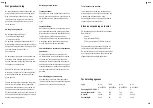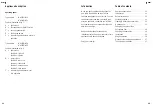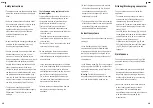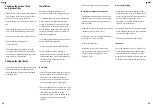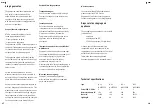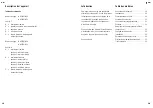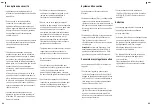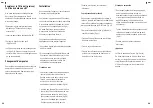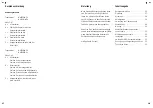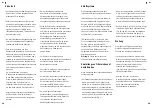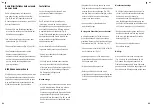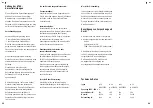
14
GB
Filtering/Discharging conversion:
The conversion can be done inside the
appliance:
*To remove the anti-grease grille, push it
towards the rear of the appliance until it
releases using the knobs, then pull it
downwards. To remove it completely rotate
it to one side while keeping the other side
steady (fig. 3).
*Check to ensure that screw A (fig. 9 and 10)
is completely unscrewed so that the internal
valve allows the air to be recirculated into
the room via the front openings.
* Lift the two metallic stoppers (fig. 9C and
10C). Insert the active charcoal fibre panel
(fig. 2F, 9F and 10F) and replace the two
stoppers.
Maintenance
The thorough cleaning and servicing of the
appliance ensures correct and long-lasting
operation:
* Use lukewarm water and a neutral liquid
detergent to clean varnished appliances.
Never use abrasive cleaning materials or
products (Vim, steel wool, green scouring
pads, liquid scouring agents).
* Never use corrosive or abrasive products
when cleaning steel copper or brass
appliances. It is recommended that
specialized products be used in accordance
with the instructions issued by the
manufacturer.
*When frying take special care to prevent
oils and fats from catching fire. Oil which
has already been used is especially
dangerous in this respect. Do not use
exposed electric grills.
*To avoid possible risk of fire always comply
with the instructions for use when cleaning
anti-grease filters and when removing
grease deposits from the appliance.
Extraction systems
The cooker hoods can be connected in one of
two ways:
In the Discharge mode (fig. 1) cooking
vapours and/or odours are immediately
discharged outside (via the ceiling and/or a
wall) by a discharge duct using the holes
positioned on the top and/or at the back of
the appliance.
In the Filtering mode (fig. 2) cooking vapours
and/or odours are purified by a carbon filter
and recirculated into the room via the front
openings.
Warning
: For the filtering mode it is
absolutely essential to use the carbon filter
whereas for Discharging mode it is not.
13
GB
The following warning applies only in the
United Kingdom:
It is possible that the colours of the wires in
the mains cable of this appliance may not
correspond with the coloured markings
identifying the terminals in your plug.
If this is the case, proceed as follows:
*The blue wire must be connected to the
terminal which is marked with the letter N or
coloured black;
*The brown wire must be connected to the
terminal which is marked with the letter L or
coloured red;
*Neither wire is to be connected to the earth
terminal of a three-pin plug.
*When making the electrical connections
check that the voltage corresponds with
that indicated on the rating plate inside the
extractor hood.
*In the event that your appliance is not fitted
with a non-separating flexible cable and has
no plug, or has no other device to ensure
omnipolar disconnection from the electrical
main with a contact opening of at least
3 mm, such a separating device must be
included in the fixed installation to ensure
disconnection from the main.
*Always disconnect this appliance from the
main before cleaning or servicing the
appliance.
Safety instructions
*The distance between the hob and the lower
part of the extractor hood must be at least
65cm.
*Under no circumstances should the outlet
be connected to a duct which is also being
used to discharge exhaust gas from
appliances fuelled by an energy source
other than electricity (central heating
systems, thermosiphons, water
heaters, etc.).
*When installing the discharge outlet always
comply with the regulations in force as
issued by the relevant authorities.
*Caution is needed if an extractor hood and
another heat source (e.g. gas, oil, coal
stoves, etc.) which also requires air are
being used together in the same room, since
it is possible that the extractor hood may
deplete the necessary combustion air and
thus create a depression in the room.
In order to ensure that the exhaust gas from
the heat source is not drawn into the room,
the maximum depression permitted in the
room is 0.04 mbar. There must also be an air
source in the room which constantly feeds
the room with a steady flow of fresh air.
*The technical specifications of this
appliance mean that it falls under category
II insulation. Therefore it must not be
earthed.






